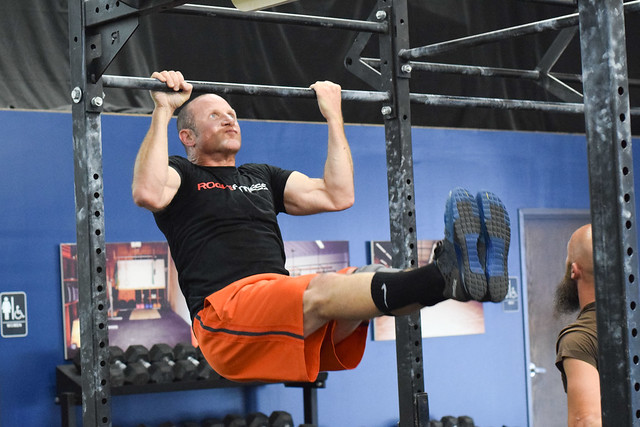Deadlift
2-2-2-2-2-2-2
This is part of your yearly benchmark series. Log your score!

“Why do we do that crazy thing with the legs straight out to the side?”
If we look at the straddle position with our legs straightened and split wide there is obviously a lot of flexibility going on. Sitting in the position correctly is enough for some to get a good hamstring stretch. For others it’s also building strength in our erectors (low-back) and hip flexors as they work hard to keep us sitting up (rather than falling backwards). This has tremendous carry-over to the bottom of the squat where many can get a “butt wink”, which is caused more often than not by awareness and strength in these muscles.
Trying to lift our legs from this position uses the leverage of the legs to strengthen our hip flexors at a very end-range position. Stronger hip flexors means stronger squat and deadlifts among other things. But it’s one thing to flex hard and lift for a second and then just let our leg flop to the ground and another thing entirely to be able to control different positions at this end range. That is where the circles come in.
The circles build a larger range of motion that we actually have control over. Consider a typical hamstring stretch where you lay on your back and pull your leg into your chest. This is passive stretching. Can you lift your leg into that same stretched position without using your arms? That is active stretching and it’s much more difficult, but in the process of learning it you build a tremendous amount of strength and mobility at the same time. That’s what we’re doing by implementing the circles, and that is why they’re so hard.
And the hold at the end is for more than just pain. What good is all that strength and control if we can only do it once? We throw on a little cherry with a hold at the very end to add some stamina to our new skill.
At the end we have a stronger more flexible hip that we can also control. There will be some cramping in the process, and it will be hard, maybe even seem impossible, but it’s not. Work from the proper step in the progression that you’re at now, and at the same time you’ll be improving every other movement you do that involves your hip.

Shit, does that mean we’re doing those goddamned things for skill work tomorrow?!